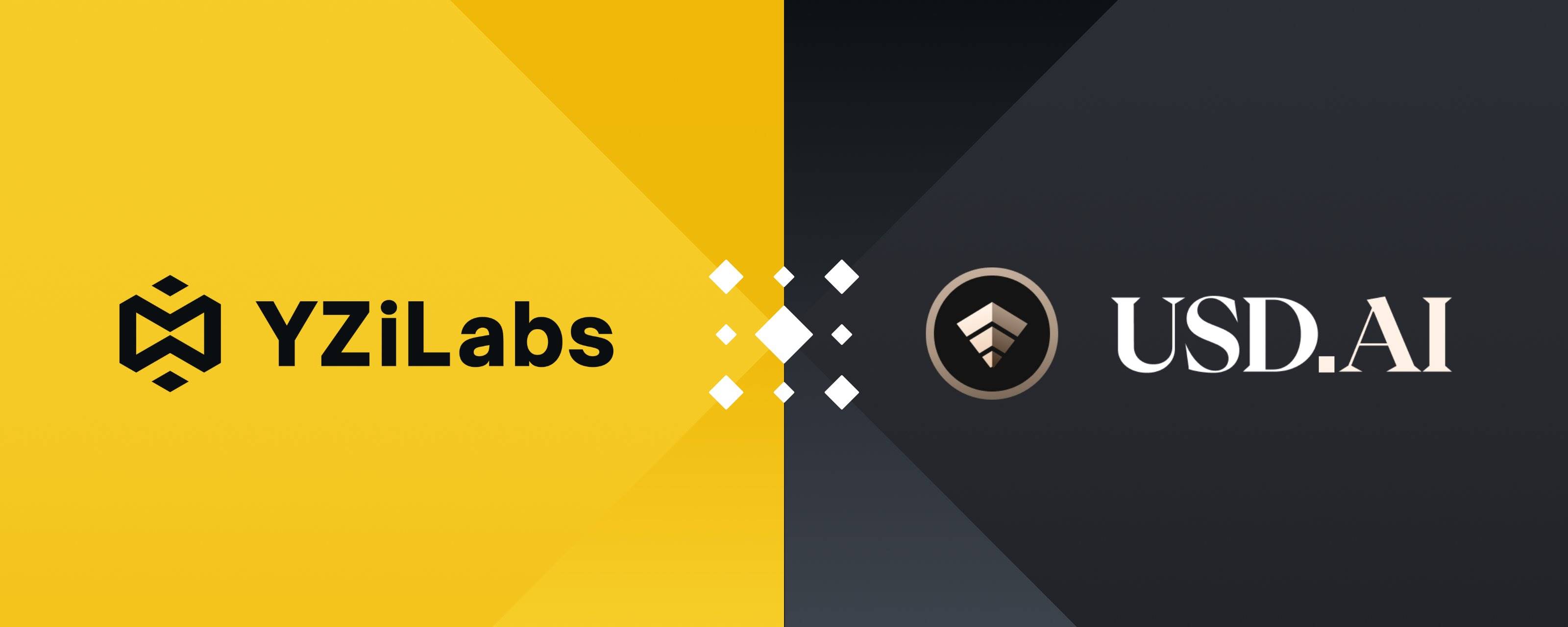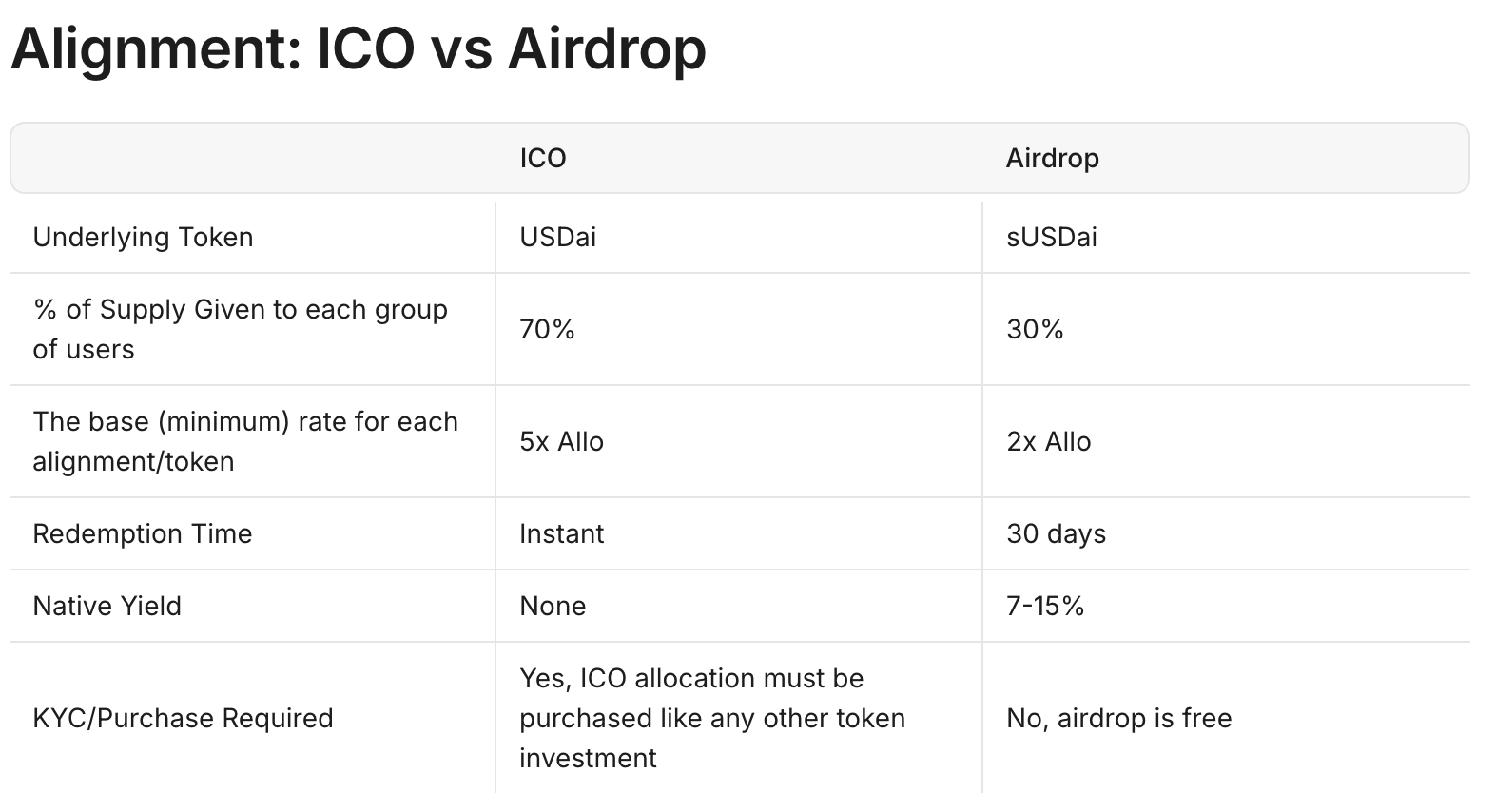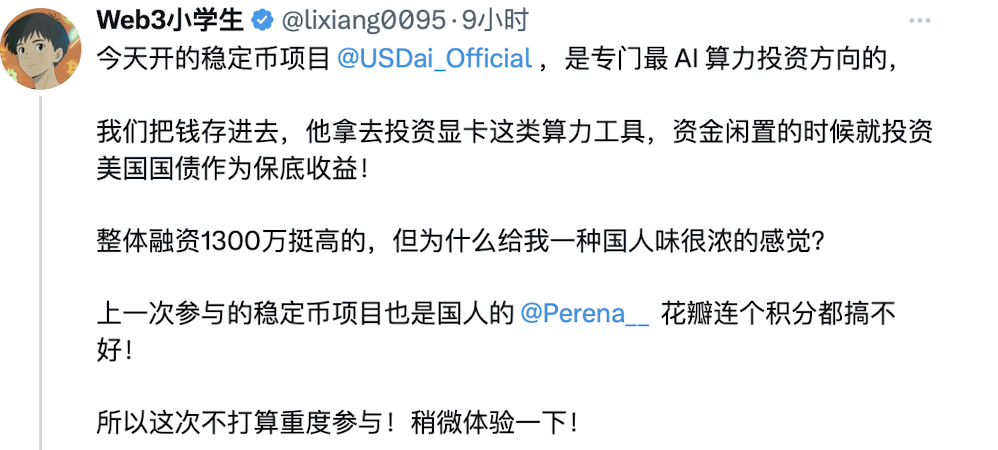USD.AI generates returns through AI hardware collateral, filling the gap in financing computational resources.
Written by: Umbrella, Deep Tide TechFlow
On August 26, YZi Labs announced a strategic investment in USD.AI, a stablecoin protocol that provides hardware collateral financing for AI infrastructure.

According to Coingecko data, the current global stablecoin market capitalization has exceeded $285 billion. Major players like Circle and Kraken are also entering the stablecoin payment chain arena.
However, the vast majority of current stablecoin projects still primarily anchor to traditional models such as the US dollar and US Treasury bonds, showing a lack of overall innovation and a general "lack of imagination." Against this backdrop, a unique challenger is entering the market with a fresh approach.
Recently, a distinctive stablecoin project that integrates DePIN, RWA, and AI, USD.AI, has sparked heated discussions in the market. It does not simply anchor to the US dollar but generates returns through AI hardware collateral, filling the financing gap for computational resources.
Recently, USD.AI officially launched and opened its deposit channel, quickly gaining traction. This could bring new opportunities for the fusion of AI and stablecoins.
Project Background
According to Rootdata, the project was established in 2024. One of the core founders of USD.AI, David Choi, is the co-founder and CEO of the well-known NFT lending platform MetaStreet and was previously an investment banking analyst at Deutsche Bank.
What truly brought USD.AI into the spotlight is its impressive financing background.
On the 14th of this month, USD.AI announced the completion of a $13.4 million Series A financing round, led by Framework Ventures.
As an investment institution focused on DeFi and infrastructure, Framework Ventures has previously supported star projects like Uniswap and ChainLink. Its participation in leading USD.AI reflects the institution's recognition of the project's innovative value. Other investors include prominent crypto VC Dragonfly, Layer2 network giant Arbitrum, and the recently IPO-listed popular exchange Bullish.

The luxurious lineup of this financing round not only injects strong resources into USD.AI but also validates the appeal of stablecoin projects that combine DePIN and AI to top-tier capital, significantly raising market expectations. Following the release of the financing information, the USD.AI project team seized the opportunity and officially launched on the 19th, sparking widespread market discussion.
Operational Principles and Core Mechanisms
In the context of growing demand for AI computing power, USD.AI is designed to combine a stablecoin protocol with AI infrastructure financing to address issues that other projects in the current market have not tackled:
Small and medium-sized AI companies possess valuable GPU hardware but struggle to obtain operational funding through traditional channels.
The core goal of the project is to support AI companies' hardware procurement and operations through on-chain capital, filling the financing gap of traditional finance in the new AI economy while maintaining the low-risk characteristics of stablecoins.
USD.AI revolves around a closed-loop system of "collateral-minting-investment-returns," integrating the currently popular concepts of RWA and AI, showcasing its unique innovative advantages in this wave of stablecoins.
The operational principle of USD.AI begins with users using stablecoins like USDT or USDC as collateral to mint USDai stablecoins at a 1:1 ratio. USDai is backed by US Treasury bonds and mainstream stablecoins to achieve a pegged dollar price with instant redemption capability and certain liquidity, suitable for trading or providing liquidity in the DeFi ecosystem. Users can further choose to stake USDai to obtain sUSDai tokens, participating in other DeFi projects for additional returns, achieving a "one fish, multiple eats" effect.
USD.AI will use the funds deposited by users for investments in two types of assets: first, providing loans to AI companies for the procurement of GPUs and other hardware, generating high interest, with the current official website showing an annualized yield of 6.96%; second, if funds are idle, they will be invested in US Treasury bonds to provide stable base returns. sUSDai holders can amplify their returns through DeFi protocols, with the project's official website indicating a target annualized yield of 15%-25%, while USDai holders enjoy low-risk stable returns.

The core mechanism of USD.AI includes the following key components to ensure its innovation and stability:
Dual-token system: USDai serves as a low-risk stablecoin suitable for users seeking stability; sUSDai targets investors seeking high returns, combining flexibility and risk exposure. This design meets the needs of users with different risk preferences while maintaining compatibility with the DeFi ecosystem.
Asset tokenization and Caliber framework: Through the CALIBER framework, USD.AI tokenizes physical assets like AI hardware into on-chain assets, ensuring asset ownership transparency and legal enforceability through legal and technical means. The on-chain insurance mechanism further reduces default risk.
QEV redemption mechanism: To address the long-term and low liquidity nature of AI infrastructure assets, USD.AI has designed the QEV mechanism to manage sUSDai redemption requests in a market-driven manner, avoiding the inefficiency of first-come-first-served while ensuring fairness and stability of the protocol.
FiLo Curator expansion mechanism: This mechanism allows the protocol to scale up by introducing new borrowers, expanding the AI infrastructure investment portfolio while maintaining user interests through structural protection and risk alignment mechanisms, ensuring diversity and sustainability of revenue sources.
In summary, the funds deposited by users in USD.AI will be used to provide loans to AI companies needing GPU and other hardware computing power to earn interest, with full transparency. If funds are idle, they will be used to purchase US Treasury bonds for guaranteed returns.
USD.AI's innovative mechanism gives it a unique competitive advantage. Compared to traditional stablecoin projects, USD.AI achieves higher returns through AI infrastructure investment; compared to high-risk DeFi protocols, its risk isolation and insurance mechanisms significantly reduce systemic risk.
USD.AI not only injects new vitality into the stablecoin market but also provides a scalable solution for the capital needs of the AI economy, potentially becoming a pioneering project in the fusion of stablecoins and AI infrastructure.
Participation Methods
Currently, the USD.AI project has opened user deposits and invites other users to participate in the USD.AI rewards system, Allo points.
Users can obtain final token rewards through ICO and airdrop methods. All participants will enter with a project valuation of $30 million (corresponding to 10% of the total FDV of $300 million).
According to official tweets, minting or staking USDai will continuously generate points daily, and users can choose different strategies to determine their final ICO allocation or airdrop rewards.
The Allo points activity will end when the YPO (cumulative paid returns) reaches $20 million. Users choosing the ICO allocation need to go through KYC, while those opting for airdrops do not need to undergo KYC.
More advanced ways to earn Allo points can be learned through the introduction video in the official tweet.

In simple terms, to participate in the project ICO, holding USDai is sufficient; to participate in the airdrop, one needs to stake USDai to obtain sUSDai.
Currently, purchasing USDai or sUSDai will yield qUSDai, which serves as a deposit queue proof and will automatically convert to the corresponding token within 24 hours.
USD.AI currently has a total deposit cap of $100 million. Since all purchased funds are currently in qUSDai status, the current TVL only shows the $52 million deposited during the testing phase.

Market Discussion
Current market views on the USD.AI project are polarized.
Supportive users generally believe that USD.AI is a stablecoin project with unique innovation, integrating the currently popular AI concept, allowing users to enjoy AI dividends while ensuring stable returns. It offers various participation strategies so that different types of users can find suitable solutions, combining the "stability" characteristic of stablecoins with high-risk, high-return options.

Conversely, opposing users argue that the information currently disclosed by USD.AI suggests that its team background may be predominantly Chinese, and that the project merely stacks popular concepts without substantial innovation.

Interestingly, USD.AI's core founder David recently replied to this FUD tweet, identifying himself as a Korean-American and stating that the project is headquartered in New York, but he is very willing to answer questions for Chinese users.

In my opinion, USD.AI indeed provides a different answer in the popular stablecoin arena, but whether it can gain market favor and recognition will depend on whether people are willing to "vote with their feet" to quickly fill the $100 million TVL cap.
Its success or failure will also serve as a litmus test for the market's acceptance of the emerging narrative of "AI infrastructure + stablecoins."
免责声明:本文章仅代表作者个人观点,不代表本平台的立场和观点。本文章仅供信息分享,不构成对任何人的任何投资建议。用户与作者之间的任何争议,与本平台无关。如网页中刊载的文章或图片涉及侵权,请提供相关的权利证明和身份证明发送邮件到support@aicoin.com,本平台相关工作人员将会进行核查。




